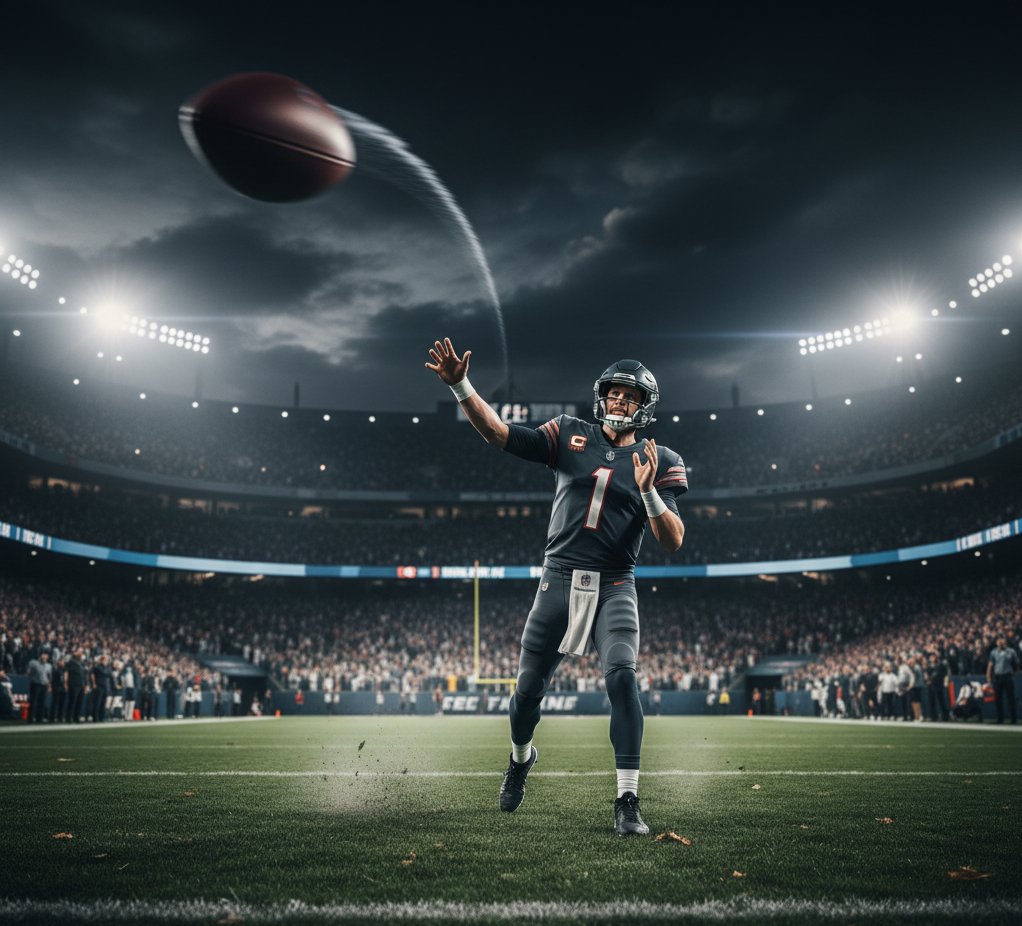Quarterback arm strength has always been one of the most exciting topics in football. Fans love watching long passes sail downfield, and scouts often use throwing distance as one measure of a quarterback’s raw talent. That brings up the big question: how far can a QB throw a football?
The answer depends on several factors, including arm strength, mechanics, body type, and even the conditions of the field. While the average NFL quarterback can throw impressively far, some players stand out with jaw-dropping distances. Let’s break down how far quarterbacks can really throw, the record distances, and what affects throwing power.
The Average Throwing Distance for NFL Quarterbacks
Most professional quarterbacks in the NFL can throw a football 55 to 65 yards in the air during practice conditions. In game situations, however, quarterbacks rarely throw more than 45 to 55 yards downfield because accuracy becomes more important than raw distance.
For example:
A standard deep pass often travels 40–50 yards.
The longest in-game throws usually range between 55–65 yards depending on the situation.
While those numbers already sound impressive, some quarterbacks can launch the ball much farther in non-game conditions.
Quarterbacks with the Longest Throws
Several quarterbacks throughout history have been famous for their cannon-like arms. Here are a few notable examples:
Patrick Mahomes: Known for his rocket arm, Mahomes has reportedly thrown the football over 80 yards in practice.
Josh Allen: Another modern QB with incredible strength, Allen has been measured throwing 75–80 yards.
Brett Favre: In his prime, Favre could throw 70+ yards, pairing velocity with distance.
Michael Vick: In a contest, Vick once threw a football just over 80 yards, cementing his place among the strongest arms in NFL history.
John Elway: Widely regarded as one of the most powerful arms of all time, Elway consistently launched passes 70+ yards during his career.
These quarterbacks are outliers. Most NFL passers cannot match such extraordinary distances.
The Record for the Longest Throw
The official record throw in competition belongs to Patrick Mahomes and Josh Allen, both claiming throws of about 80 yards in different settings. While not in an official NFL game, these throws demonstrate the upper limit of quarterback power.
In terms of in-game throws, the farthest completed passes usually reach around 70 yards, considering the added challenge of defensive pressure, accuracy, and timing.
What Affects How Far a QB Can Throw?
Several key factors determine throwing distance:
1. Arm Strength
Muscle power, particularly in the shoulder and chest, plays a major role. Elite quarterbacks train to maximize their upper-body strength without losing flexibility.
2. Throwing Mechanics
Proper technique can add significant distance. A QB with a clean release and efficient motion can generate more velocity.
3. Footwork and Body Position
Using the lower body to drive momentum adds power. Quarterbacks who throw off balance or under pressure often lose 10–15 yards of potential distance.
4. Grip and Hand Size
Larger hands allow better control of the football, which improves spin and distance. Brett Favre and Josh Allen, both with large hands, benefited greatly in this area.
5. Game Situations
Throwing while under pressure, avoiding a sack, or while moving limits distance. Practice throws don’t compare to live game environments.
6. Weather Conditions
Wind, rain, and cold weather can all affect how far a football travels. In favorable conditions, quarterbacks can add extra yards.
Training to Increase Throwing Distance
Quarterbacks don’t just rely on natural talent. Many follow specialized training programs to improve throwing power:
Strength Training: Focusing on shoulders, chest, arms, and core.
Flexibility and Mobility Work: Prevents injuries and improves throwing range.
Footwork Drills: Ensures maximum lower-body contribution.
Throwing Mechanics Practice: Refining motion to eliminate wasted movement.
This combination helps quarterbacks add both velocity and distance to their throws.
Distance vs. Velocity: What’s More Important?
While fans love watching quarterbacks throw 70–80 yards in practice, actual games demand something else: velocity and accuracy.
A 20-yard pass thrown at 60 mph into tight coverage is often more valuable than an 80-yard bomb that misses its target.
Quarterbacks like Tom Brady and Drew Brees weren’t known for the longest throws but excelled with precision and timing.
This shows that throwing distance is just one piece of quarterback success.
How Far Can a High School or College QB Throw?
Not every quarterback throws like Mahomes or Allen. Here’s a breakdown across different levels:
High School QB: 35–50 yards depending on age and strength.
College QB: 50–60 yards for most starters.
NFL QB: 55–80 yards at the elite level.
This progression highlights just how special professional quarterbacks really are.
Iconic Long Throws in NFL History
Several moments stand out when discussing long passes:
Aaron Rodgers’ Hail Marys: Rodgers completed multiple game-winning throws that traveled 60+ yards in the air.
Michael Vick in practice: His 80+ yard throw remains legendary.
Patrick Mahomes in warm-ups: Mahomes has thrown the ball nearly the entire length of the field before games.
These plays inspire awe and remind fans of the raw athleticism of NFL quarterbacks.
Conclusion
So, how far can a QB throw a football? The average NFL quarterback can throw around 55–65 yards, with elite arms like Patrick Mahomes, Josh Allen, and Michael Vick capable of reaching 75–80 yards in practice conditions.
Throwing distance depends on mechanics, strength, body position, and conditions, but in real games, accuracy often matters more than raw power. Still, the ability to launch a football nearly the length of the field is part of what makes quarterbacks some of the most fascinating athletes in sports.
For fans, watching a perfectly thrown deep ball is one of the most exciting sights in football — a true blend of skill, power, and precision.

